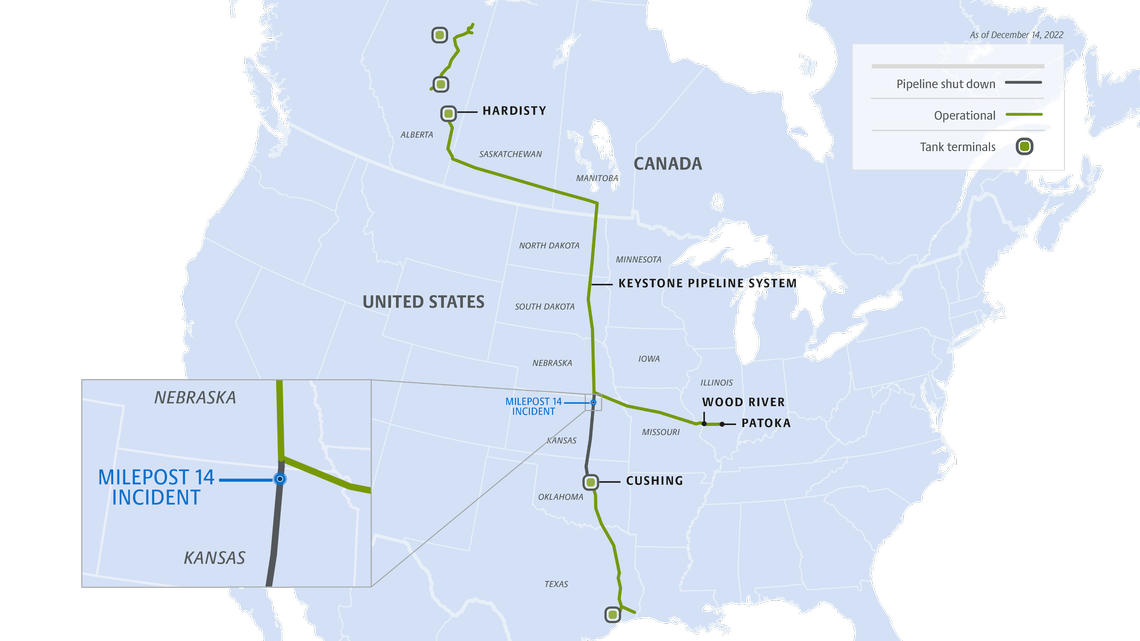Almost 100 animals were killed by Keystone oil spill. How to report affected wildlife
Four mammals and 92 fish have been found dead so far on the site of the Keystone Pipeline’s oil spill in Washington County, Kansas.
Environmental Protection Agency (EPA) spokesperson Kellen Ashford told The Star that one of the mammals was a beaver that was found alive and received care from wildlife specialists, but died days later.
“The Kansas Department of Wildlife and Parks (KDWP) is working with federal partners to conduct wildlife identification and impact assessments,” the agency reported Monday. “While KDWP staff can confirm select fish, mussels, and mammals have been impacted, it is still too early to determine the extent (of the impact).”
Over 600 workers are now onsite conducting cleanup, rehabilitation and monitoring.
How can I help wildlife affected by the oil spill?
TC Energy, the Canadian company which operates the Keystone Pipeline, has established a reporting system for impacted wildlife. Anyone in the area of the spill, which occurred near Mill Creek in Washington County, Kansas, can use this form to report sightings of wildlife that may have been affected by the incident.
The form asks for your name, contact information, the location of the animal and a description of what you saw. If possible, the company asks that you provide exact GPS coordinates for the wildlife you see.
The company has not responded to The Star’s requests for information about the reports it has received so far.
“We are working with wildlife assessment crews including state and federal wildlife trustees and have trained professional responders onsite to identify any impacts to wildlife,” the company wrote in a press release Friday morning.
What type of oil is impacting wildlife on the site of the spill?
The EPA announced Thursday morning that the material spilled from the Keystone rupture was diluted bitumen, a heavy crude oil. Exposure to this substance has been found to cause symptoms including behavior changes, loss of body weight and eventually death in a variety of animals from marine mammals to birds.
A study in this January’s edition of the Journal of Ecotoxicology and Environmental Safety found that diluted bitumen, often called “dilbit,” is more toxic than conventional crude oil based on its effects on zebra finches.
Bitumen is a thick oily substance with a consistency similar to peanut butter. In order for it to flow through pipelines, it is commonly diluted with other petroleum compounds.
As of Monday morning, the company reports that it has recovered 7,233 barrels of oil from the site — just over half of the estimated amount spilled. Crews have also recovered 5,000 cubic yards of oil-contaminated soil, according to an EPA press release.
What else do we know about the spill and cleanup efforts?
Personnel on the site of the Keystone Pipeline oil spill now number over 600, according to the Environmental Protection Agency (EPA)‘s response page.

The portion of the pipeline running between Alberta, Canada and Wood River, Illinois reopened Wednesday night, one week after the pipeline released 14,000 barrels of crude oil in northern Kansas — the largest spill in its 12-year history.
The segment of the pipeline known as the Cushing Extension, which operates in the 288-mile stretch between Steele City, Nebraska and Cushing, Oklahoma, is the only segment that remains shut down as crews continue to work on cleanup and repairs.
The company still has not released visuals or other information about the rupture, saying that it is still investigating the cause of the spill. Segments of the pipeline have operated at a higher than standard pressure since 2017, according to a 2021 government report.
Do you have more questions about the impacts of last week’s Keystone Pipeline oil spill? Ask the Service Journalism team at kcq@kcstar.com.
